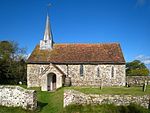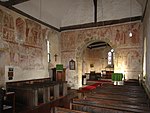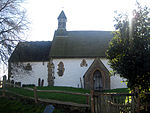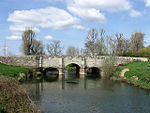The River Rother flows from Empshott in Hampshire, England, to Stopham in West Sussex, where it joins the River Arun. At 52 kilometres (32 mi) long, most of the river lies within West Sussex except for the first 10 kilometres (6.2 mi) which lie in Hampshire. The upper river, from its source to Midhurst, has been used to power watermills, with the earliest recorded use being in 1086, when the Domesday survey was conducted. Although none are still operational, many of the buildings which housed the mills still exist, and in some cases, still retain their milling machinery. This upper section is also noted for a number of early bridges, which have survived since their construction in the fifteenth, sixteenth and seventeenth centuries.
The lower river, from Midhurst to its junction with the River Arun, has been used for navigation. Boats used the section from the Arun to Fittleworth following improvements made to the Arun in 1615, and after the Arun Navigation was completed in 1790, the Earl of Egremont made the river navigable up to Midhurst by constructing eight locks and some small cuts. The work was completed in 1794, and many of the bridges built at that time still survive. With the opening of the Mid-Sussex Railway branch to Midhurst in 1859, traffic declined, and commercial use of the river had ceased by the 1880s. Pleasure boats continued to be used on the river for many years, and published accounts of journeys along the decaying navigation appeared in 1914 and 1920. The navigation was officially abandoned in 1936, after an undergraduate pointed out that it was still a public right of way.
The river flows through the South Downs National Park, and is a designated Site of Nature Conservation Importance, in recognition of its value for wildlife. It supports a wide range of fish, and its upper reaches are the only location in Sussex where native white clawed crayfish can be found. The quality of the water is generally good, and the river is measured at four gauging stations, three on the main channel, and one of the River Lod, just before its junction with the Rother. Water from the underlying Lower Greensand aquifer and the adjacent chalk aquifer helps to maintain the flows during the summer months, despite the fact that large volumes are abstracted from both the aquifers and the river for the public water supply.












